… we met for the first time as the new Division Three. Here are some souvenirs:
- my best guess as to the second languages that might be at play in our room (although I don’t speak them, my ancestors’ languages are represented by the last three – any guesses as to what they are?)

- We shared our Hopes and Fears for the coming year:

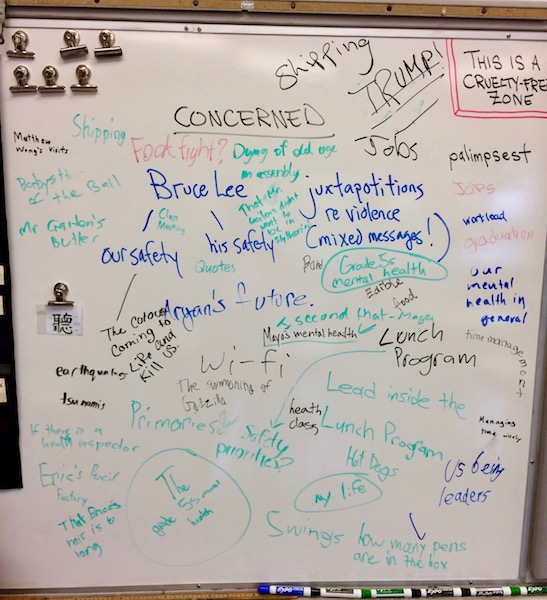
- A big chunk of our time during the first weeks of school was devoted to developing a capacity for community, team work, and strategic thinking through a series of physical activities like passing balls of various sizes (and a rubber chicken, for levity) down a staggered line, coming up with strategies to improve our time with each subsequent attempt…
…King Pong!
…Cooperative juggling!
…and the epic card game Golf (thank you, Uncle Greg and Aunt Bronwen!) in randomly assigned groups!
- Students indulged my obsession with tennis by watching highlights from the US Open and writing about and discussing notions of good sportspersonship, how things like footwork and recovering from one set down can be used as useful metaphors for life in school, and just what it is about Serena Williams that makes her such a great and compelling champion, whether keeping her emotions in check to dominate her older sister…
…or quickly recovering from a second set loss to find a way to beat a determined and revitalized opponent…
New York Times: “In Test of Time, Serena Williams Proves Hers Isn’t Running Out”
The New Yorker: “How Serena Williams Used the Most Beautiful Service Toss in Tennis to Beat Her Sister Venus at the U.S. Open”
New York Times: “In the U.S. Open Final, a Comeback Season Meets a Breakthrough Season”
- We also dove head first into the controversy and ethical issues surrounding the women’s final, and the stereotypes at play:
The New Yorker: “Naomi Osaka’s U.S. Open Victory Against Serena Williams Nearly Ruined By a Call is Redeemed by Empathy and Grace”
Washington Post: “Billie Jean King: Serena is still treated differently than male athletes”
New York Times: “Martina Navratilova: What Serena Got Wrong”
New York Times: “Serena Williams Came In on a High Road. It Made Her Fall More Devastating”
- And a new hero emerged: Naomi Osaka.
Tennis.com: “How Naomi Osaka Answered Chaos with Calm to Win the U.S. Open Crown”
- We began to train our brains to experience the world in a different way, with careful observation of small details in order to reach a greater understanding of the whole. This work was guided by the pedagogy of the genius writer/artist/teacher Lynda Barry, aping the work she does with her university students in her Interdisciplinary Creativity courses at the University of Wisconsin-Madison. At the heart of this work is the use of the Comp Book as a one size fits all container for our class work and students’ self-exploration:
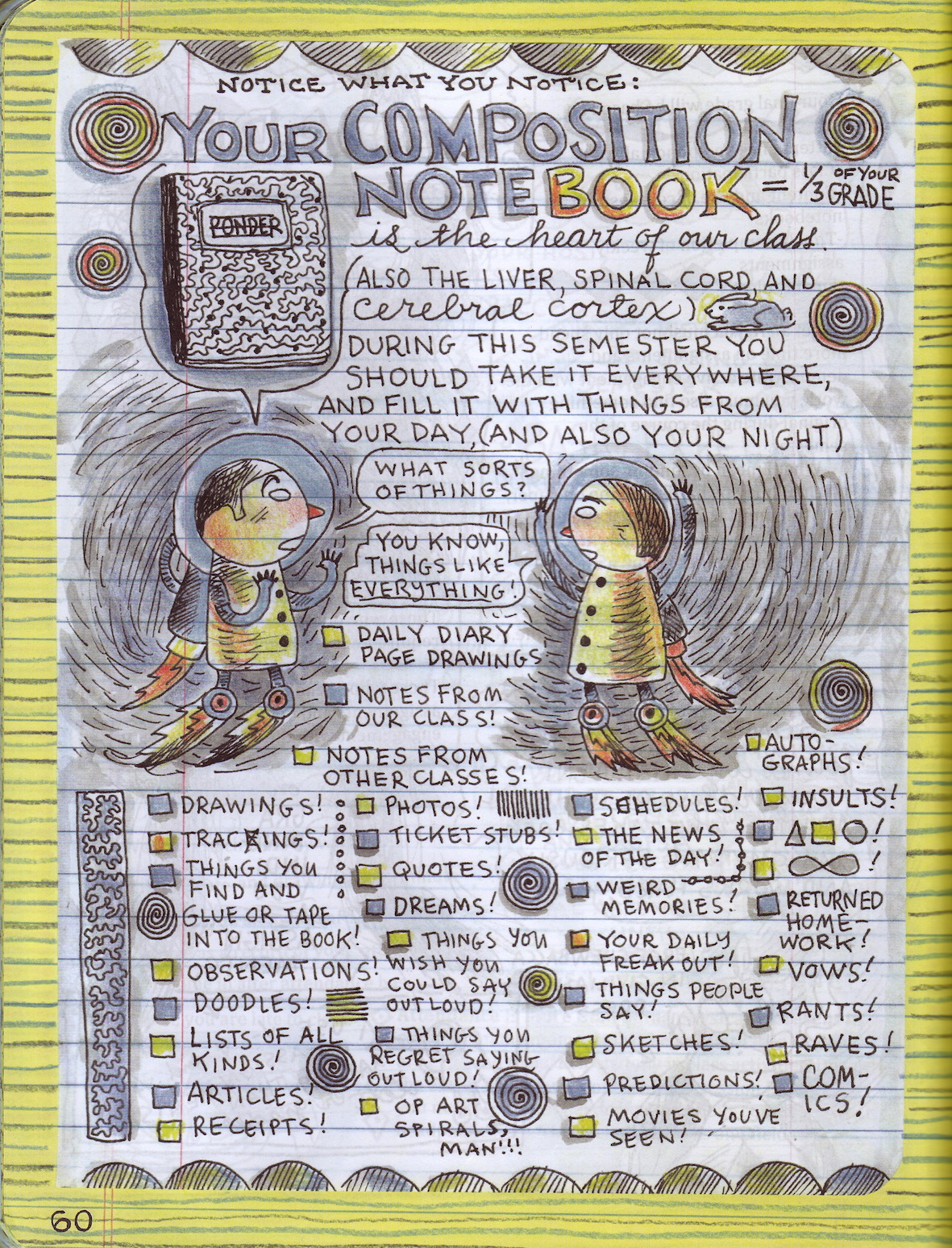 (a reminder to students: the more you invest in your comp book, the greater the improvement you will experience in your academics and your life – scientifically proven!)
(a reminder to students: the more you invest in your comp book, the greater the improvement you will experience in your academics and your life – scientifically proven!) - We practiced observing Tiny, Perfect Things…
- We did some research about how to lie and how to spot a lie and then practiced lying to each other and trying to separate lies and truths through careful observation of the speaker…
- We used Betty Edwards’ seminal text, Drawing on the Right Side of the Brain, as a guide for tricking our brains into seeing the world in unexpected ways…
- And we practiced circumventing perfectionism with several rounds of a Drawing Jam! in which students had three minutes to draw a given noun, and then drawings were swapped around the room and students had three minutes to enhance the drawing they received through the use of color…
- While we completed math diagnostics and pre-assessments, we also woke up our math brains (and purposefully practiced partner work with a randomly assigned partner) in the fiendish Skyscraper challenge…
- And then we shared ideas about what was learned from the activity…

- We started our Social Studies unit exploring different systems of government by diving into the murky, intricate, and at times infuriating waters of the U.S. midterm elections. First we established what we already (think we) know and what immediate questions we had (a certain pattern emerged…):
And then we used a few different tools to gain a broad understanding of the structure of U.S. governance, like Schoolhouse Rock! (AKA How Mr. Gaitens Learned Everything There is to Know Between Watching Saturday Morning Cartoons)…
- Using the World Book as a resource, students broke into randomly assigned small groups to become “experts” on one of the levels of government, practicing note-taking techniques by working to distill the essential information from the interesting information…
…and then one member from each group joined together to form new groups, and each member taught their area of expertise to the others…
- After that, we watch A LOT of segments from the PBS NewsHour relating to the midterms and practiced using web-making as a note-taking tool, as well as generating questions to fuel further exploration (and learning from my own messy scrawl that 1) a web needs to make sense to you, and 2) sometimes to you need to redo your web for clarity after your first attempt!)…
- While exploring the Kavanaugh/Blasey Ford hearings, we started to look at effective and ineffective ways of speaking, in preparation for our first presentations (and learned that the whiteboard by the outside door tends to get smudged by people entering and exiting – Doh!)…
- We watched and talked and wrote about a lot of videos exploring Bruce Lee’s notion of Pliable Awareness (being totally relaxed but totally aware of everything around you) and how that kind of mindset can be applied to school.
…to name but a few (as well as getting inside the mind of Gabrielle Hamilton, chef/owner of Prune; and all the Pliable Awareness videos at the bottom of our Bruce Lee page, and Brené Brown’s amazing TED Talk on vulnerability)
We then held our first Socratic Circle, discussing how to apply this kind of mindset to our life in school…
…and then recapped our learning with a whiteboard blitz:
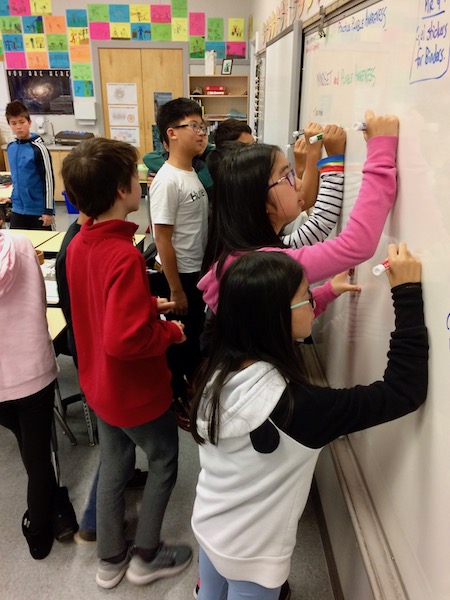
- Fully disclosure: during this whiteboard blitz, I fell prey to my old nemesis, The “There Is Not Enough Available Storage to Take a Photo” Monster. So, a few weeks later, we staged a reenactment. It was gratifying to see how much you all had retained of that work, and fascinating to see how a dialogue emerged on the board, with students building on each others’ ideas and sharing different perspectives about pressure vs. relaxation and talent vs. passion:

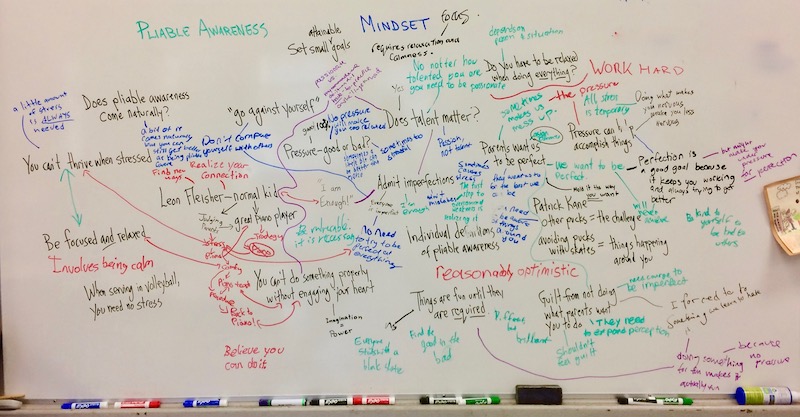
- And students received their Brain Name Alter Egos for our work in Science…
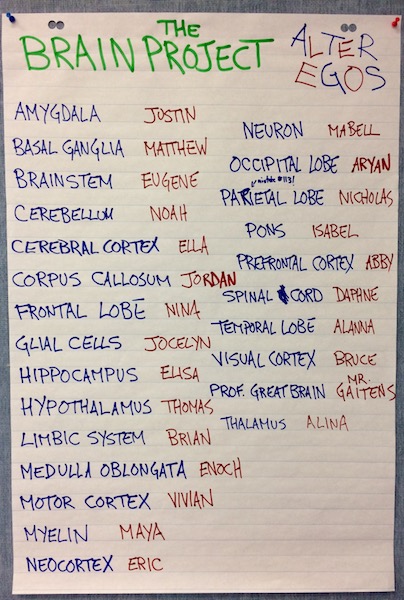 This is, of course, just a fraction of what we have done over the past several weeks, but hopefully this gives you, parents, a little window into our world, and you, students, a little reminder of how far we’ve come already! Oh, and also:
This is, of course, just a fraction of what we have done over the past several weeks, but hopefully this gives you, parents, a little window into our world, and you, students, a little reminder of how far we’ve come already! Oh, and also:
























































































































































